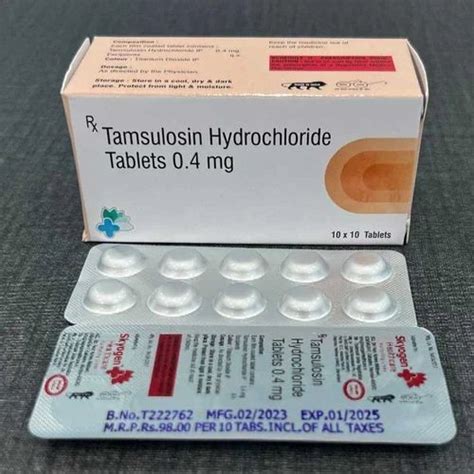Intro
Discover key facts about Tamsulosin HCl, including its uses, benefits, and side effects, to understand this alpha-blockers role in treating BPH and urinary issues, with insights into dosage, interactions, and patient experiences.
The importance of understanding the specifics of certain medications cannot be overstated, especially when it comes to treatments for common health issues. One such medication is Tamsulosin HCl, which is widely used for the treatment of benign prostatic hyperplasia (BPH), a condition that affects a significant portion of the male population as they age. BPH can lead to uncomfortable and inconvenient symptoms, impacting the quality of life for those affected. It's crucial, therefore, to delve into the specifics of Tamsulosin HCl, exploring its benefits, mechanisms, potential side effects, and how it compares to other treatments.
Tamsulosin HCl is a type of alpha-blocker, which works by relaxing the muscles in the prostate and the bladder neck, making it easier to urinate. This is particularly important for men suffering from BPH, as the condition can cause the prostate to enlarge, putting pressure on the urethra and limiting urine flow. By understanding how Tamsulosin HCl works and its effects on the body, individuals can make informed decisions about their treatment options.
The use of Tamsulosin HCl has been well-documented, with numerous studies highlighting its efficacy in improving symptoms of BPH. However, like all medications, it's not without potential side effects, and understanding these is crucial for managing expectations and ensuring the best possible outcomes. Moreover, the comparison with other treatments, including lifestyle changes and alternative medications, can provide a comprehensive view of the available options for managing BPH.
Introduction to Tamsulosin HCl

How Tamsulosin HCl Works
The mechanism of action of Tamsulosin HCl is quite specific, targeting the alpha-1 adrenergic receptors. By blocking these receptors, Tamsulosin HCl reduces the constriction of the smooth muscles in the prostate and the bladder neck, which are responsible for the obstructive symptoms seen in BPH. This selective action on the alpha-1 receptors minimizes the impact on blood pressure, a common side effect seen with non-selective alpha-blockers.Benefits of Tamsulosin HCl

Potential Side Effects
While Tamsulosin HCl is generally well-tolerated, it's not devoid of potential side effects. Common side effects may include: - Dizziness or lightheadedness, especially when standing up from a sitting or lying down position. - Headache. - Runny nose or sore throat. - Back pain. - Diarrhea. - Decreased semen emission during ejaculation, which can affect fertility.Comparison with Other Treatments

Lifestyle Changes
In addition to medication, certain lifestyle changes can help manage BPH symptoms. These include: - Limiting fluid intake in the evening to reduce nighttime urination. - Avoiding or reducing the intake of irritants like caffeine and alcohol. - Engaging in regular physical activity. - Practicing bladder training to gradually increase the time between urinating.Steps for Taking Tamsulosin HCl

Practical Examples and Statistical Data
Numerous studies have demonstrated the efficacy of Tamsulosin HCl in managing BPH symptoms. For instance, clinical trials have shown significant improvements in urine flow rates and reductions in symptoms such as frequency and urgency. Moreover, patient satisfaction surveys often highlight the positive impact of Tamsulosin HCl on quality of life.Conclusion and Future Directions

We invite you to share your thoughts and experiences with Tamsulosin HCl or any other BPH treatments. Your insights can help others make informed decisions about their health. Please comment below or share this article with someone who might find it helpful.
What is Tamsulosin HCl used for?
+Tamsulosin HCl is used to treat the symptoms of benign prostatic hyperplasia (BPH), a condition in which the prostate gland is enlarged and can cause urinary symptoms.
How does Tamsulosin HCl work?
+Tamsulosin HCl works by relaxing the muscles in the prostate and bladder neck, making it easier to urinate. It does this by blocking the alpha-1 adrenergic receptors, which are responsible for the constriction of these muscles.
What are the common side effects of Tamsulosin HCl?
+Common side effects of Tamsulosin HCl include dizziness, headache, runny nose, back pain, and diarrhea. It can also cause a condition known as floppy iris syndrome during cataract surgery.
